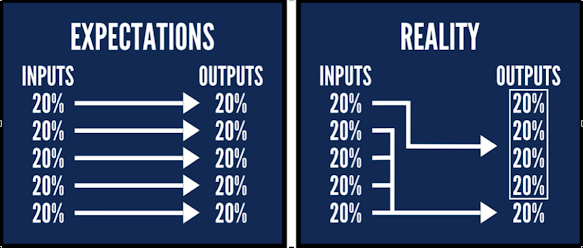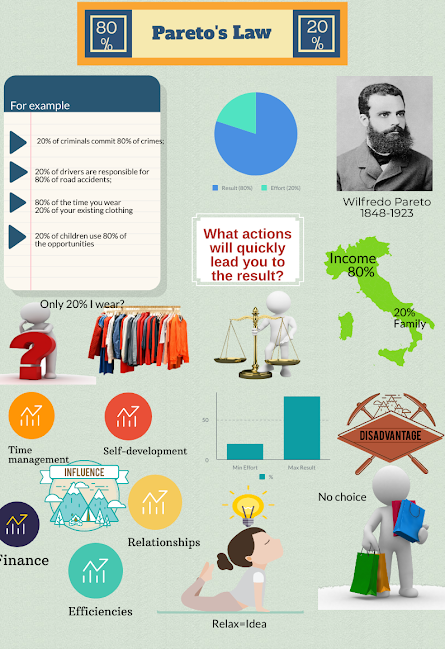In most cases, about 80% of the result comes from 20% of the causes. These numbers can vary – sometimes it's 70/30 and sometimes 90/10.
It can be used as a basic setting for analyzing the performance factors of an activity and optimizing its results: by choosing the minimum of the most important actions correctly, you can quickly get a significant part of the planned full result, while further improvements are ineffective and may be unjustified (according to the Pareto curve).
It finds its application in many areas. But, bearing in mind that by choosing 20% of the necessary actions correctly, you can get 80% of the desired result, it is also worth considering that subsequent efforts may not bring results at all. This idea is illustrated by the Pareto curve (image taken from the Esquire website).
Perhaps one of the most famous examples of the application of the Pareto principle is the 1960 US presidential campaign. The last months of the election race, R. Nixon spent in constant travel, because he made a rash promise to go around all the states, even such sparsely populated ones as Haiti. His opponent, John F. Kennedy, on the other hand, focused on speaking in several of the most populous states. Later, he won.
The 80/20 law was successfully applied by IBM. In the early 1960s, its engineers identified the 20% of tasks that were used in 80% of computer work. The algorithm was changed, and the most popular calculations became much easier, more convenient, and most importantly-faster. This gave the result – IBM left its competitors far behind.
The Pareto principle is useful in the life of anyone who practices time management and asks questions about improving efficiency. Speaking of making a to-do list, it is best to allocate no more than 10 tasks per day, of which 2 are global, requiring the main attention. When recalculated as a percentage, it becomes clear that this condition is a variation of the 80/20 theory.
The development of stress tolerance will help to improve performance and generally have a positive impact on life. Psychologists have found that 20% of stressful situations cause 80% of all experienced anxiety and anxiety. Learn to avoid and minimize negative impacts.



Комментарии
Отправить комментарий